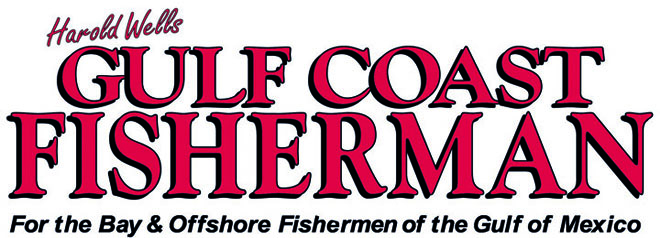
The Saltwater Magazine for Gulf Coast Fishing!
FISHING FORECASTS
| FISHING CALENDARS | ARTICLES | ADVERTISE
| SUBSCRIBE


CHOOSING THE RIGHT PROP
by Adam Kendall
![]()

For some boaters, choosing the right propeller can be difficult. However, choosing the correct propeller for a particular boat and motor is actually a fairly simple task once you understand what a propeller really is.
First, think of a propeller as a gear, similar to one on a car or a bicycle. A lower gear offers a faster hole shot and more power, but the revolutions are much faster, so at a point you can only turn that gear so fast until you over rev the engine. Now, think of a car stuck in 5th gear. It's very slow out of the hole with little torque, but eventually it reaches a good cruising speed.
The same basic concept applies to propellers, except with a prop you are committed to only one gear. You need to find the prop size that gives the best overall performance.
Your engine has a recommended wide-open throttle rpm range. For example, an 18' boat with a 125 hp engine has a range of 4,500-5,500 rpm. In many cases, you purchase a boat with some sort of propeller on it. Let's say this motor has a 21 pitch prop and at wide-open throttle, under a normal boatload, the engine turns 4,900 rpm. It's in the range so it's the correct prop, right? Yes and no. For the health and longevity of the engine it's okay, but for overall performance, you want to run a propeller near the top of the range.
To get there, remember this rule: for every 2" of propeller pitch, rpm will change approximately 400 rpm. As you drop in pitch, rpm increase, and as you go up in pitch, rpm decrease. If you want to raise rpm you should choose a lower pitch prop. Following the rule, going down to a 19 pitch should raise rpm to about 5,300. That would help the hole shot and also gain more speed.
This is not an ironclad rule, however. Sometimes varying 2" of pitch will only change rpm by 200. Switching propeller brands or manufacturer can also sometimes alter the rule.
The most important concept to understand is that less pitch equals more rpm and more pitch equals less rpm. For a boat to perform at its peak, you need to run at the upper end of the engine's recommended rpm range. If you still want more speed, handling or lift, that's when a propeller's brand can make a difference.
Here's a simple adjustment you can make to improve performance under varying boatloads. If you normally run with one other person on board, use that boatload as a measurement to determine your wide-open throttle rpm. But if you load the boat with more people or try to pull a water skier or tuber, use a prop that is 2" lower in pitch than your normal prop. It will compensate for added weight and drag and greatly improve on performance in these circumstances. Remember to keep an eye on your rpm when running a lower pitch for these circumstances so you don't over rev the engine.
Most props have the size marked on the barrel, blades or front or back of the propeller. Use the pitch that you're currently running as your starting point. If it's already running correctly then that is your pitch. Contact Turning Point Propellers Inc., 896 Cambridge Drive, Elk Grove Village, IL 60007; Phone: 847-437-6800. www.turningpointpropellers.com;
Editors note: Adam Kendall aids in the testing of Turning Point's propellers and also serves as the company's Marketing Director. Contact Turning Point Propellers at 847-437-6800 or www.turningpointpropellers.com.
